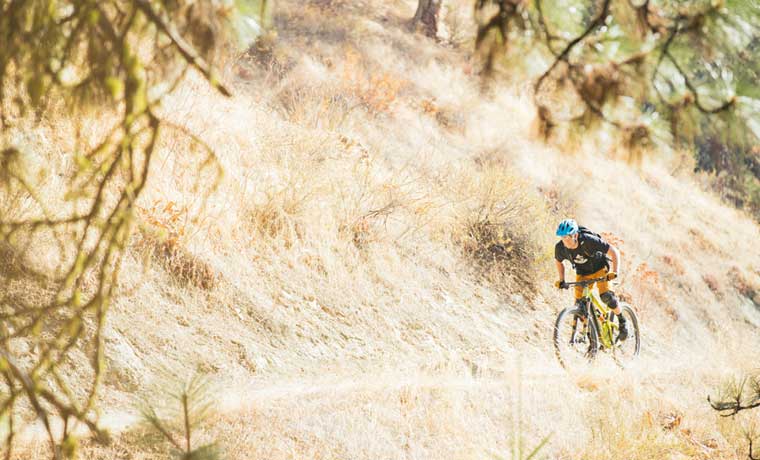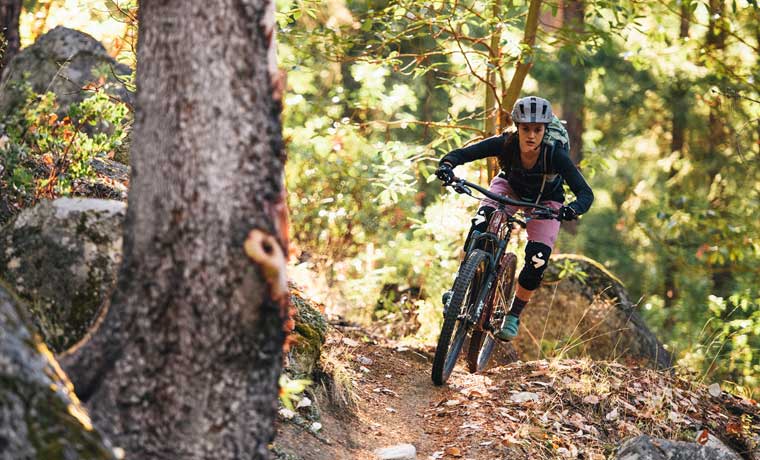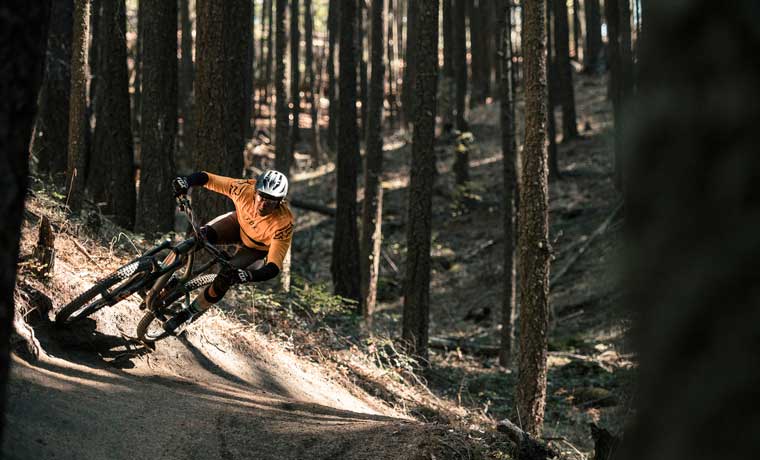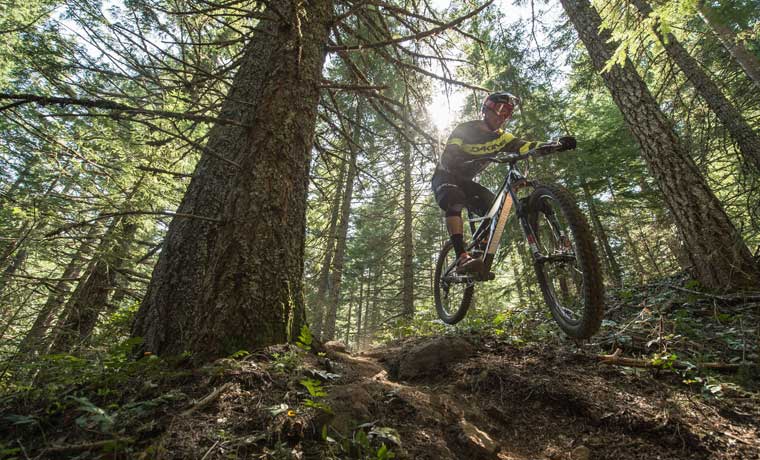Strong mountain bikers make it look so effortless, like they’re not even trying as they spin up challenging climbs and bomb technical descents. But it’s not just about having the fancy bike and the right bike clothes. Beneath the surface it’s all built on a platform of simple fundamentals that even a complete beginner mountain biker can understand. So we’re breaking down the five essential mountain bike skills that everything else is based on. These are simple guidelines that apply to everyone, from the youngest kids to professional riders. They’re skills you’ll continue to work on and grow in every time you ride your mountain bike. So focus on these five skills, and become a stronger rider everyday.

01Mountain bike skill: Active body position
The most fundamental mountain bike skill of all is having your body in an “active position.” This position is basically the same across all sports. It’s a dynamic stance that allows you to read and react to terrain. Here’s a short list of everything it entails:
Stand up (butt off seat)
This position allows us to anticipate and react to anything that could happen on the trail. It’s our baseline anytime we’re not pedaling.
Bend your knees and elbows
As well as standing up, bending our elbows and knees gives us better bike-body separation. This means that we can let the bike move and react to terrain on the trail, without every tiny bump jostling our body. This makes riding faster and smoother.
Look up
Looking up helps us focus on what we’re going to do, instead of obsessing over whatever our front tire is currently doing. It allows you to read the trail and prepare for the next session. A good way to help yourself look up is to adjust the visor of your bike helmet up and out of the way.
Level pedals and cranks (cranks horizontal to the ground)
Leveling our pedals and cranks puts us in a stronger position on the mountain bike. Having one foot forward, and one back, instead of one up, and one down, gives us a bigger platform to balance on when the trail gets rough.
Cover your brakes with one finger
Covering our brakes allows us to make instantaneous small corrections instead of fumbling for the brakes and panicking. Mountain bike gloves will have small fingertip traction patches to help with grip on your brake lever.

02Mountain bike skill: Climbing
Not many people start mountain biking because they’re excited to ride uphill, but climbing is one of the most challenging mountain bike skills to learn. The biggest things we need to focus on are having a steady cadence and good body position. Your cadence is the rhythm of your pedal strokes. You want to be in an easy enough gear that you can keep a smooth, steady rhythm, without standing up.
Then you want to push your chest forward. We like to use the expression “Sternum to the Stem.” You’re pushing your upper body forward and bending your elbows to keep weight and traction on the front tire, while keeping your butt on the seat to maintain traction over the rear tire. This is one of those places that mountain bike shorts come in handy. Most have some kind of higher-traction seat that will keep you from sliding off the saddle.

03Mountain bike skill: Descending
It’s all about the downhill! When approaching a steep downhill, make sure you’re in that ready position, covering your brakes, with your body in that active position. Bend your knees and elbows, and make sure those pedals are level.
It’s tempting to move as much of your weight off the back of the bike as you can when it gets steep. Don’t do this though. Instead, stay centered on the bike, and use your brakes. If you get too far back you lose control of the front tire and will wash out. Your brakes aren’t just an on-off switch. Instead you want to modulate them. This means using them to work with the traction of your tire to slow down without skidding. If you’re skidding, you’re out of control. If you modulate your brakes correctly, you’ll have more control over the bike and can descend with more safety.

04Mountain bike skill: Cornering
Cornering on a mountain bike is one of those magical skills that everyone is always trying to improve at. Every corner is different, but here are some tips that apply to all corners.
- Always make sure you’re standing up and in that ready position coming into the corner.
- You want to be in a dynamic stance so that you can react through the corner.
- Brake before the corner, not in it. Try to control your speed before you’re already turning.
- As you reach the corner, aim for the outside edge of the trail. On a right turn, this would be the left edge of the trail. Follow this wider radius through the apex of the corner. As you can see the exit of the corner you can decide if you want to cut in tight to the other side of the trail, making for a faster corner. Starting wide and cutting tight allows you to set yourself up for any kind of corner, and then take a faster line if it makes sense.

05Mountain bike skill: Jumping
Even if you never plan on hitting purpose-built bike jumps, it’s important to know how to get your mountain bike off the ground safely. Just like everything else, jumping on a mountain bike starts in that active position. Even if you’re not hitting a real jump, imagine a “lip,” a place where you’re going to leave the ground. About half a bike length before the lip, compress the bike, and your body, load your suspension with your arms and legs and push through the tires into the ground.
As your front tire reaches the lip, release that pressure and use the rebound of your suspension to pull up and lift your front tire. Your bike tire will follow as it leaves the lip. Once you’re in the air, imagine yourself traveling over an arc, your bike should level out at the apex of the arc, and then land with both tires at the same time on the other side. The more power you put into compressing before the lip, and the harder you lift your bike off of it, the more air you’ll get.
These five mountain bike skills are the basis of just about anything you’ll do on your bike. So get out there, practice, and hone your fundamentals. Everything else will follow.


